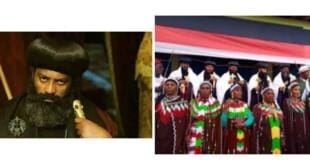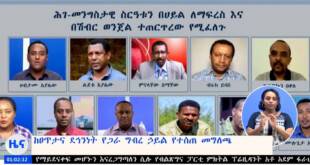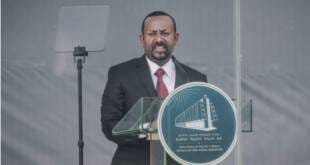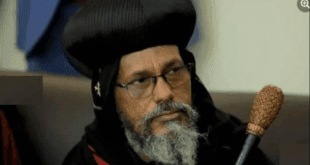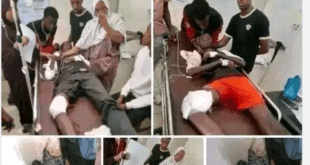http://www.dw.com/
Opposition groups say security forces have killed 20 people in three weeks of protests over a government re-zoning plan. Members of Ethiopia’s largest ethnic group view the plan as a further infringement on their rights.
“Dubbiin lafaa dubbii lafeeti!” (“The matter of land is a matter of the bone.”) When describing the sensitivity of the so-called “Addis Ababa master plan,” Bekele Naga, the Secretary-General of the Oromo Federalist Congress party (OFC), does not mince his words. “The constitution of the country proclaims that the land belongs to the people,” Naga told DW. But he believes this is being violated: “The Ethiopian government has been engaged in land grabbing, leading to cultural genocide [of the Oromo people].”
Oromia is one of nine regional states organized by Ethiopia’s system of “ethnic-based federalism,” which is part of the country’s constitution. The national government is pushing forward with a plan to expand the area of the capital, Addis Ababa, into Oromia state. Protests over the plan have been going on for weeks, but for the Oromo people, tensions have existed for much longer.
Neglect at the root of the crisis
Oromos make up the largest chunk of Ethiopia’s 95 million people, and their language is the fourth most widely spoken African language across the continent. Yet Oromo is not recognized as a federal working language.
Most Oromos feel they have been cheated of political and economic representation by a succession of non-Oromo governments. To them, the plan by the government and city administration to expand the area of the capital – which Oromos prefer to call Finfine instead of the Amharic “Addis Ababa” – is yet another example of the high-handedness of the ruling elite which comprises mostly non-Oromos.
Protests against the plan to connect the capital with a number of Oromia towns first turned violent in April 2014. At least 11 people were killed when security officers used live ammunition against demonstrators. Oromo representatives put the number of dead as high as 47.
According to an Amnesty International report from 2014, “between 2011 and 2014 at least 5,000 Oromos have been arrested […], detained without charge or trial, or killed by security services during protests, arrests and in detention.”
Many of the protestors are students, who are now demonstrating against the violence.
Farming families evicted
In Africa’s second most populous nation, land is hotly contested between farmers and investors, both local and foreign, as the government pushes forward with an ambitious development agenda. Critics of the “Addis Ababa master plan” argue that it is not designed to export development into the surrounding communities as the government claims, but rather to evict Oromo farmers and residents from their land.
One Oromo farmer from Sululta, a town part of the “integrated master plan” located 26 kilometers (16 miles) to the north of Addis Ababa, spoke to DW on condition of anonymity. He claimed that in late November alone, the government evicted 600 farming families on the grounds that their land was needed for the construction of a factory. When asked if they had received fair compensation and a new home, the farmer told DW that the money given to them was “very meager,” and that the families had so far not been given a place to relocate to.
The farmer also claimed that officials at the Sululta municipality and the Oromia regional administration threatened the farmers they were evicting with arrest should they fail to accept the “deal.”
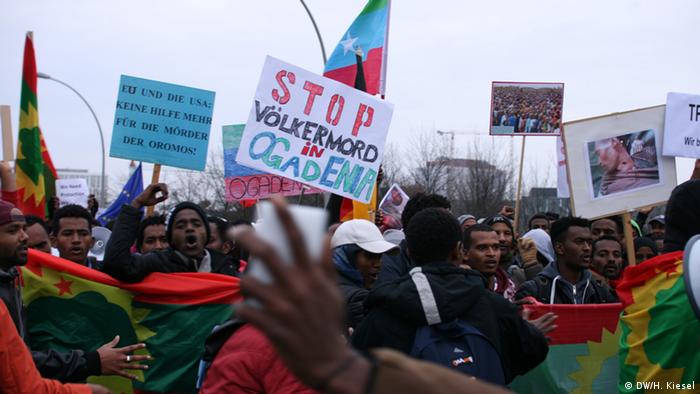 Oromo activists in Germany held protests at the chancellery in Berlin in November, 2015
Oromo activists in Germany held protests at the chancellery in Berlin in November, 2015
Get the word out
“Where do we go…no one is going to accept us,” another farmer, aged 89, told DW, on condition of anonymity.” Since we have no other solution, we are pleading to you [the media],” he said.
Not surprisingly, there has been little to no information in the country’s mainstream media, which is tightly controlled by a government often criticized by media watch groups for its harassment of independent and critical journalists.
That’s why Oromo protesters have taken to the Internet and to social media. #OromoProtests is trending on Facebook and gruesome images and videos of gunned-down students are circulating widely on the web.
Oromos in the diaspora, known for their vocal contribution to the “Oromo cause,” have also taken to the streets in major cities in the US and Europe. “It is often months before victims and witnesses come forward to reveal what happened in their communities,” says Felix Horne, an Ethiopia researcher with Human Rights Watch. “They eventually do, and the truth will emerge.”
Three weeks of protest have left 20 dead, more than 150 injured and more than 500 arrested – that is according to figures provided to DW by the OFC, the main Oromo political party. The protests are likely to continue, and some embassies in Ethiopia’s capital are bracing for more violence. Norway, for example, has issued travel warnings for parts of Oromia.
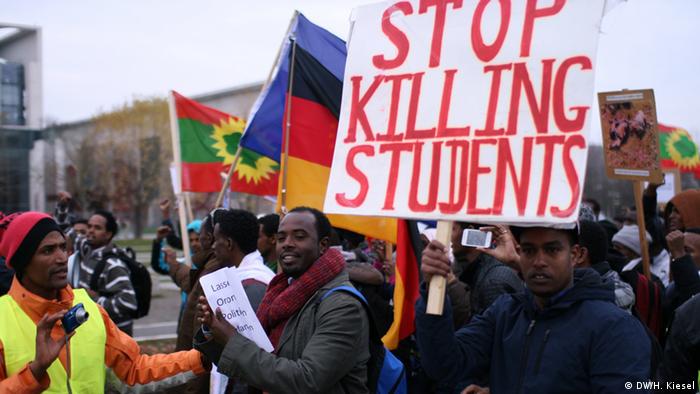
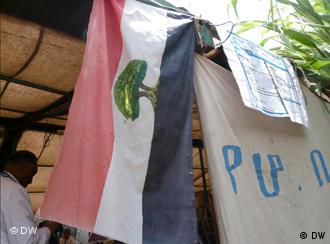 The
The 